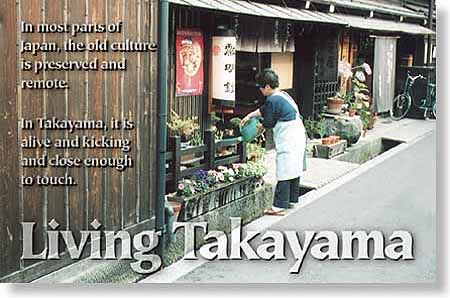
Text and photos by Steve Porritt. Click photos below for larger versions. (jpeg, 16- 32K)
![]()

Text and photos by Steve Porritt. Click photos below for larger versions.
(jpeg, 16- 32K)
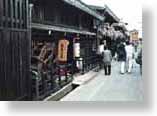 |
Surrounded by the tall, snowy mountains of the Japan Alps in northern Gifu Prefecture, Takayama has a history shaped by isolation. In earlier times, Takayama was cut off from the outside world by deep winter snows. Even today, some roads to Takayama are closed in the wintertime. While economic and cultural exchanges surged up and down the Tokaido for centuries, linking the Kansai and the Kanto year-round, Takayama remained remote. Change came slowly, and that allowed Takayama to develop and maintain a unique personality and way of life. Isolated and unique. And yet, there is something familiar about Takayama that makes visitors from both ends of the Tokaido feel right at home. It may be Takayama's small-town charm and old way of doing things that reminds Kansai folk of Heian-period Kyoto and Kanto visitors of Edo-period Tokyo. It may also be the warm and sincere hospitality for which Takayama is traditionally famous. Perhaps this hospitality resulted from the happiness of seeing outsiders after a long, cold, and lonely winter. Or was simply the neighborliness of a people that, for months on end, had only themselves to entertain. Whatever the reason, Takayama hospitality continues to warm the hearts of visitors today. Or it might be the architecture. According to one version of local history, Takayama carpenters built much of the old capital cities of Nara, Kyoto, and Edo. In those days, each village in the Hida area was required to send 10 citizens to the capital to serve as carpenters for periods of up to one year. These farmer/carpenters -- called takumi -- then came home and applied the techniques and styles they learned in the capital to the architecture of their home town. Takayama folk tell another version: the takumi were highly skilled before they went to the capital. That''s why Takayama carpenters were in such demand. Thus, the architecture of the capitals reflects Takayama's, instead of the other way around. Whichever version is true, there is no doubting the skill of the takumi who built Takayama. Their works are still standing in the San-machi Suji district, the old town center, an easy 10 minute walk north of Takayama Station. But this is no "preserved" historical district, with roped off artifacts, glass-encased antiques, and gates that shut at 5:00 p.m. It is a living neighborhood, filled with residents and shops. The shops may close at 5:00, but life continues around the clock. People still live and work here, just as they did 300 years ago. Strolling through the streets, you soon realize that all of the old, quaint buildings are still in use. The beautiful townhouse with the low entryway is actually a dentist's office, and there is the dentist himself, taking a break from seeing patients. The doctor's office is just down the street. Next door, a housewife is hanging laundry, while across the street, a grandmother is watering her street-side flower garden as the grandkids scamper about. Further down the street, the coffee shop is filled not with tourists, but with local residents, talking about the day's events and tomorrow's weather. Sake is brewed in the warehouse around the corner-- you'll recognize the brewery by the large cedar ball hanging over the entrance, indicating that the most recent batch of sake has been tasted and found to be excellent. Stepping inside is like stepping back 4 hundred years in time. The floor is dirt, the walls are ancient wood. A variety of local handicrafts adorn the walls. But it is the smell that keeps you moving towards the darkness at the back of the shop. There's a rich, heady smell of...what?...fresh sake? Who knows. It's enough to simply stand there in gloom and breathe it in. On a parallel street, a variety of papercraft items are displayed in a glass case outside the shop. Inside, the clerks sit on tatami mats raised knee-high above the dirt floor. Beautiful and surprisingly sturdy, these paper items are immensely popular with tourists seeking to minimize the size and weight of the omiyage (souvenirs) they must bring home for friends and family. Miso is made and offered for sale at another shop just down the street. Follow your nose inside, and you'll find a steaming basin of hot miso soup sits on a stove, with a stack of small cups nearby. It's self service, and everyone does. Quite a few imbibers leave the store carrying packages of red and white miso. Several hundred similar packages lie in neat piles near the doorway, all with takkyuubin labels for destinations around Japan. Even on weekends, the district is soothingly quiet. The narrow streets won't accept tour buses or cars, or even huge hordes of tourists, so the atmosphere is always low-keyed and neighborly. Takayama Spring and Autumn FestivalsTakayama bustles with excitement, however, during the spring and autumn festivals held yearly since 1690. Separated by almost six months, these two festivals are actually closely linked by ancient farming rituals. The spring Sanno festival is held at the beginning of the growing season to pray for a good rice crop, while the autumn Hachiman festival is an offering of thanks for a good harvest. The main draw of the festivals is the procession of intricately detailed floats featuring elaborate carvings by local craftsmen. Many of the floats are hundreds of years old. Each festival has a different set of floats -- to see them all, it is necessary to attend both festivals. Four of the floats feature puppets that perform on tiny stages extending from the float. Up to eight puppet masters are required to manipulate the 36 strings and rods that control a single puppet. The performances are enthusiastically received by a crowd that applauds and shouts at every movement the puppets make. Often compared to the Gion festival of Kyoto -- the floats are similar, though the Gion's are larger and older -- the Takayama festival is more intimate and somehow more real. Perhaps because the narrow streets bring together the crowd and the participants in their colorful period costumes, the observer actually becomes part of the procession, following the floats as they wend their way through the town. You can, literally, reach out and touch the festival. In feudal times, the festival ended with a banquet hosted by the wealthy class and attended by the lower classes in the community. Ostensibly an occasion to celebrate the end of the festival, it was also a time at which the lower classes could freely voice complaints about their superiors and get away with it -- a custom that will be familiar to anyone today who has ever gone dining and drinking with their boss and colleagues after work. For the foreign traveler looking for the real Japan, the sad truth is,
it is all around you -- the concrete buildings, the bright neon, the traffic
gridlock, the suits and ties. What you may be looking for, however, can
still be found, living, in Takayama.
Although Takayama is accessible by car and airplane, consider taking the train. The Hida Limited Express is comfortable and follows the famous Hida River through some beautiful countryside. The Hida Limited Express Train for Takayama departs from Nagoya a few times very early in the morning. Don't miss the last morning train as there won't be another for several hours. Approx. travel time from Nagoya: 2 hours. Going by car runs the risk of encountering heavy traffic on the main national road (Route 41) that goes up from Nagoya. Those coming from Tokyo may optionally take the expressway to Matsumoto and then drive over the mountains to Takayama. Those coming from the Kansai can drive up to Toyama via the Meishin and Hokuriku Expressways, then head south into the mountains to Takayama. It is also possible to get to Takayama by air, at least most of the way. Your flight will end in Toyama, about 1 hour north of Takayama by train.
Even without the festival, downtown Takayama offers a variety of interesting things for a visitor to do and see, most within easy walking distance of the main train station. On everyone's sightseeing itinerary is Hida Folk Village located on the outskirts of Takayama. A full-scale recreation of a feudal period farming village, complete with rice paddies, thatched-roof houses, and craft shops, Hida Folk Village is a "living village" where the old handicraft techniques are still practiced. Another event not to be missed is the morning market -- actually two markets, one at Takayama Jinya and another at Miyagawa -- selling fresh produce and flowers from neighboring farms. Takayama also seems to be home to more museums, art galleries and antique shops per square city block than any other city in Japan. Not all of them show just Takayama items. At least one museum -- the World Antique Gallery Kinokuni-kan -- features antiques from around the world. And if that isn't enough, for the truly dedicated antique shopper there is an antique market on the 7th of every month from May to October. Takayama is also a souvenir hunter's paradise. Naturally, the area is famous for its furniture, toys, and other woodcraft, but Takayama lacquerware and pottery are also well-known throughout Japan and make excellent gifts. A truly beautiful effect is created when woodcraft, laquerware and pottery come together as a delicate stand and vase for displaying flowers. As befits a family resort area, Takayama offers a variety of outdoor activities year-round. Skiing is a natural winter sport, and Takayama is a natural base for vacationers looking to cap a morning of skiing with an afternoon of sightseeing, museum browsing, and antique hunting. In the summer, the mountains become a cool refuge from the terrible heat and humidity of the coastal cities. For the Tokyoite turned off by the summer swarms of Hakone and Karuizawa, Takayama is a refreshing and far less crowded hot-weather retreat. The area has preserved much of its natural beauty, which can be enjoy through a variety of outdoor activities, including golfing, hiking, camping, tennis, canoeing, swimming, fishing, and even para-gliding. And what could be more refreshing than a long soak in an open-air hot spring bath? Takayama has one. Takayama is also a natural jumping-off point for day or overnight trips to Shirakawa-go (a UNESCO World Heritage village), Furukawa, Hirayu Onsen, Kamikochi, Tateyama, and other nearby areas of interest.Toyama and Kanazawa are a bit further off, but still near enough to be considered second-legs of a trip to Takayama. Of course, there are also a number of special events throughout the year...
The Hotel Associa Takayama Resort offers first-class European service with traditional Takayama hospitality, plus Takayama's only outdoor hot spring bath! Most of the highly trained staff speak English. (0577) 36-0001. Japanese style inns (ryokan) abound in downtown Takayama and the surrounding countryside. A completely Japanese experience, including futons (sleeping quilts) and Japanese style dinner and breakfast can be yours for ¥9,000 to ¥20,000 per person. Minshuku run a bit cheaper (approx. ¥7,000 per person), but also offer two meals per day. Youth Hostels and People's lodges (Kokumin Shukusha) are also available for up to ¥6,400 per night, including meals. If you are planning to visit Takayama during the spring or fall festival, be sure to book your reservations well in advance. For more travel information, call the Hida Tourist Information Office (0577-32-5328; closed Sat./Sun.).
Takayam miso is used in many dishes, including the local specialty, "hoba-miso, in which vegetables are mixed with miso and wrapped in a magnolia tree leaf, then roasted over an open flame. Delicious! (If you'd like to try it at home, most of the souvenir shops in the neighborhood offer a kit that includes a tiny candle-powered grill, magnolia leaves, and miso.) If you like soba (buckwheat noodles), you're in for a real treat: it is a specialty of the region, and there a many fine restaurants which make their own on the premises in full view of the diners. And while not quite as well known as Matsuzaka or Kobe beef, Hida beef has a tasty reputation both as steak and in sukiyaki. According to a highly experienced friend (hi, Don!), Hida Takayama beer is the best of the current crop of Japanese microbeers. Steve Porritt is a freelance writer based in the Kansai. He has lived in Japan for 23 years.
e-mail: steve@kyomedia.com | ||||||||||||||
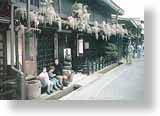 | |||||||||||||||
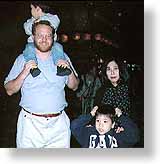 | |||||||||||||||
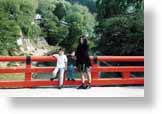 | |||||||||||||||
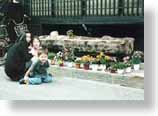 | |||||||||||||||
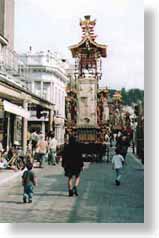 | |||||||||||||||
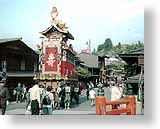 | |||||||||||||||
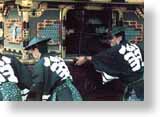 | |||||||||||||||
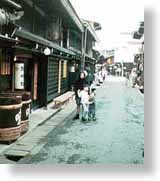 | |||||||||||||||
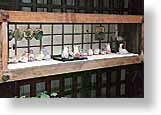 | |||||||||||||||
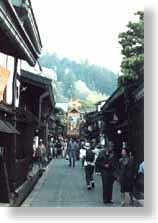 | |||||||||||||||
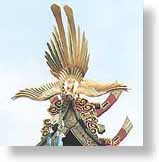 | |||||||||||||||
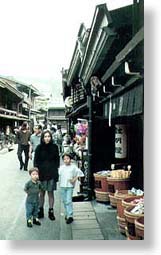 | |||||||||||||||
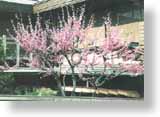 | |||||||||||||||
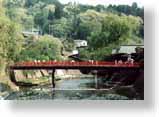 | |||||||||||||||
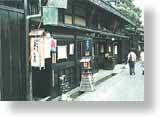 | |||||||||||||||
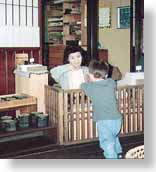 | |||||||||||||||
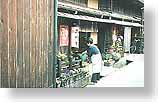 | |||||||||||||||
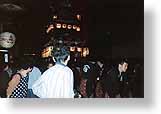 | |||||||||||||||
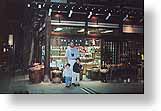 | |||||||||||||||
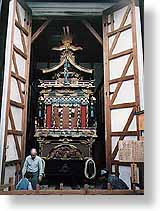 | |||||||||||||||
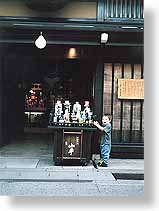 | |||||||||||||||
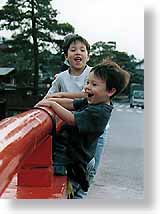 | |||||||||||||||
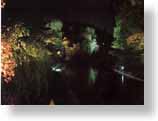 | |||||||||||||||
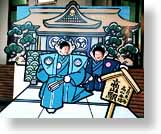 | |||||||||||||||
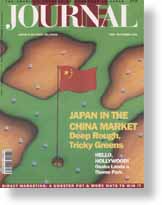 |
The original version of this story first appeared in the September, 1996, issue of the Journal for the American Chamber of Commerce in Japan, published by Paradigm. |
Page design by...
